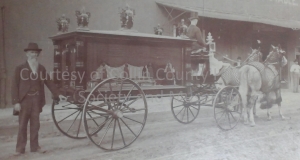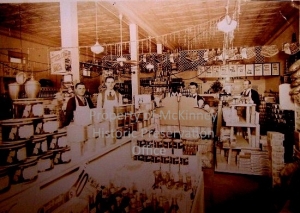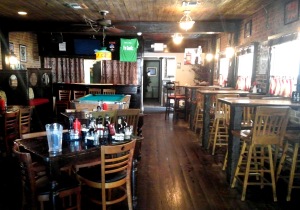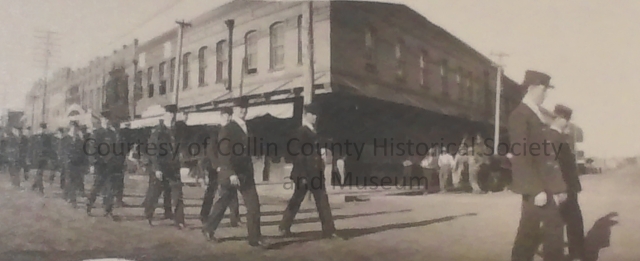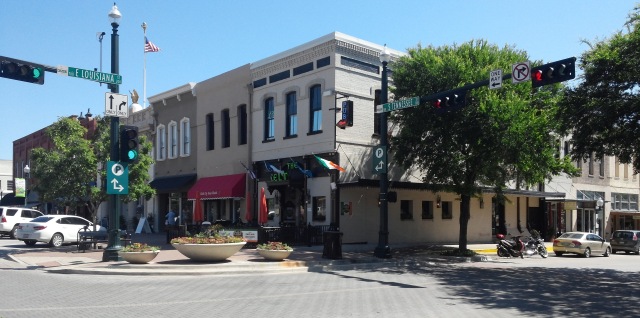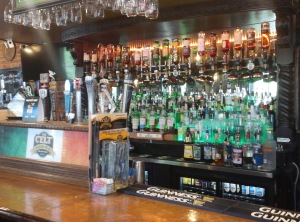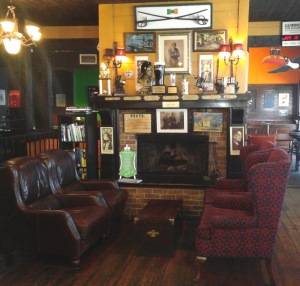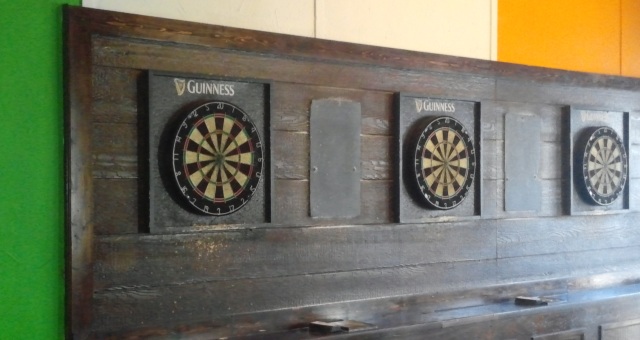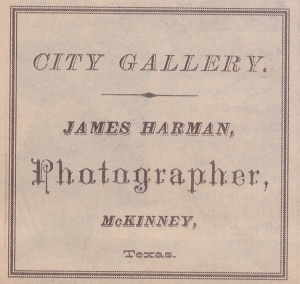
Though undated, this ad for James Harman’s studio probably ran in the 1860’s or 1870’s. Image from September, 2005 edition of The McKinney News.
As a professional photographer in the 1860’s and 1870’s, Mr. James Harman gave us a window into McKinney’s past that few could rival. With the only studio in McKinney, he made portraits of many area residents. One particular picture, taken in 1872, earned Mr. Harman a significant place in Collin County’s history.
After a sensational trial and days of deliberation by the jury (which was sequestered in the Faires House, another Chestnut Square landmark), Ballew was found guilty of murdering James Golden of Missouri. He was sentenced to death, and would become the first white man legally hung in Collin County. The condemned man asked that James Harman make “a fine photograph” of him before going to the gallows.
Business grew after that famous portrait, and in 1874, James and his wife, Fannie, purchased the lot on the southeast corner of Anthony and Chestnut Streets. They built a two-story, Victorian house across from what is today the Dulaney Cottage. When they moved in to their new home, they couldn’t have known how long they would remain part of the community, even though their time in residence was short-lived. The Harmans sold the property to Mr. W.H. Ferrell in September of 1877 and moved to Galax, Virginia, where Mr. Harman opened a dental practice. In January of 1878, Captain John Johnson, CSA, and his wife, Polly, purchased the house and moved their family to McKinney.
Education was important to Captain Johnson, who left school at fourteen years old to support his mother and sisters after the death of his father. He and Mrs. Johnson had a total of thirteen children, and he pledged that they would graduate without the struggles he endured. It was the quality of McKinney’s schools that led him to move the family into town. Unfortunately, he believed book-learning was wasted on his daughters, so only the Johnson boys were able to take advantage of the educational opportunities offered.
As a boy, young John split rails to fill his role as breadwinner. When he turned twenty-one, he homesteaded a plot of land in Missouri, where the family lived. By 1861, he had turned his original claim into a large, prosperous farm. When the Missouri legislature voted to remain part of the Union instead of seceding, he sold his land for a handsome profit and came to Texas, leaving his family behind for a time. After purchasing two hundred acres east of McKinney, Mr. Johnson became an officer in the Confederate States Army.
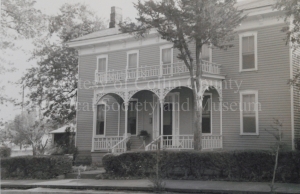
The Johnson House in an earlier decade. On the left side, note the outbuilding and the lack of commercial buildings on Highway 5.
He took leave once his new property had suitable accommodations and traveled back to Missouri to retrieve his wife, children, and sisters. Since Missouri was a border state, the captain had friends and family fighting on both sides and had to take precautions until they managed to cross back into the CSA. Instead of driving one of the wagons, he rode his horse so he could disappear into the woods until the intentions of anyone they passed became known.

The furniture in the bridal room belonged to Tuck Hill, cousin of Jesse James. The portrait beside the bed is of the famous outlaw.
After the war, Captain Johnson represented Collin County and Grayson County at the 1875 Texas Constitutional Convention. He wrote the Homestead Bill that became law in 1876 when the new Constitution was adopted. It allowed the head of a family, or anyone over twenty-one years old, to claim one hundred sixty acres of unsettled land for a twelve-dollar filing fee. As long as a dwelling was built and a water source established, the homesteaders would own the land after working it for three years. The Captain also served as a state legislator from 1883 until 1885 and two terms as a state Senator.
Known for his brutally direct speech and fiery temper, Captain Johnson’s face and neck turned bright red whenever he got upset. Since he was, by all accounts, often angry, his florid complexion earned him the name Rutabaga Johnson. Another moniker, Skillet Johnson, was less amusing. According to Chestnut Square’s history…
Legend has it that he built shot-cabins by hand with scrap lumber that he carried to the site each day. When he went to collect rent from a mother, she did not have the rent so Mr. Johnson told her he would take her only skillet so that when she had the money, she would pay him first instead of feeding her children!!
Captain Johnson died in 1899 at eighty years old, and his wife, Polly, followed him a year later, just after the start of the new century. They are buried in the Johnson Cemetery in New Hope, beneath the tallest grave marker in Collin County. The house remained in the family until it was purchased by Chestnut Square in 1987. Still on its original site, today it serves as the bridal suite for weddings held in the historic village.
The home is preserved as closely as possible to its original state, except for one upstairs bedroom. Known as Bobby’s Room, it is a memorial to Bobby Joe Younger, a native of McKinney who traced his roots to John and Polly Johnson. He attended Texas A&M after graduating from McKinney High School in 1942, but left College Station just a few months later to fight in World War II. He completed twelve missions over Germany as a belly turret gunner aboard the Bomber Dear, a B-17 Flying Fortress. On November 2, 1944, his plane went down after a bombing run over Merseburg. Nineteen-year-old Bobby didn’t survive that thirteenth mission.
The Heritage Guild remembered Bobby Younger’s life and his sacrifice by recreating what his bedroom might have looked like when he reported for basic training. The display includes many of his personal belongings, as well as other articles common in 1943. Bobby’s Room was dedicated on Veteran’s Day, November 11, 2001. McKinney Mayor Don Dozier, Congressman Ralph Hall, and friends and relatives were on hand for the ceremony.
Neither the Harmans nor the Johnsons set out to shape McKinney’s future. Yet, in living out their days, both families helped lay the foundation for who we are as a community, just as we’re setting the course for those who will take our places in years to come. One day, like them, history will be us.
The Johnson House will be open to the public on Saturday May 14 from 9:00 am until noon as part of Chestnut Square’s Second Saturday activities. Included will be uniforms worn by Collin County veterans through the years.
The farmers’ market, open every Saturday, was voted the best in Texas. It features North Texas grown produce and meats, as well as the works of local artists and artisans. For more information, follow the link or click on the Chestnut Square link on the right side of this page.
http://www.chestnutsquare.org/farmers-market/
If you have a memory of the Johnson House or anyone who called it home, please share it in the comment box below. If you’d like to see more posts about the history of McKinney, click on the FOLLOW button in the top right corner of this page.

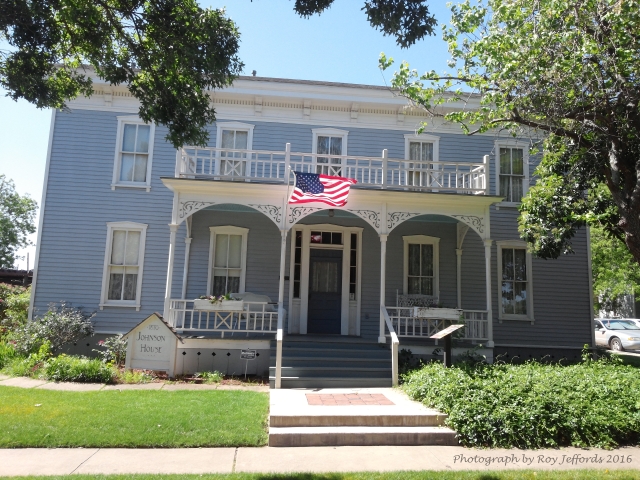
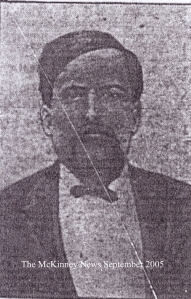
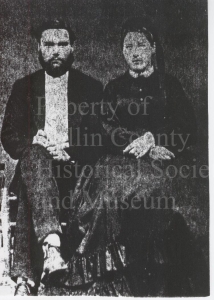
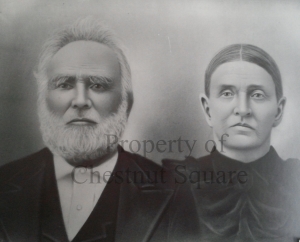
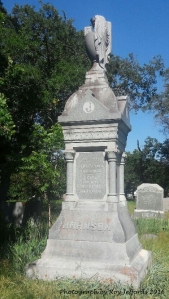
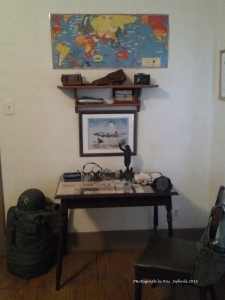
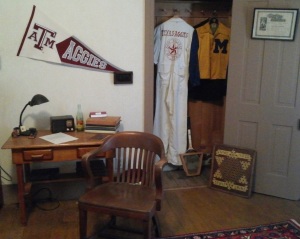
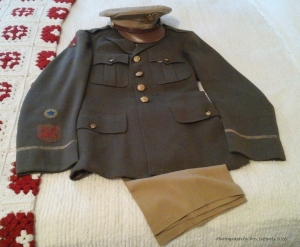
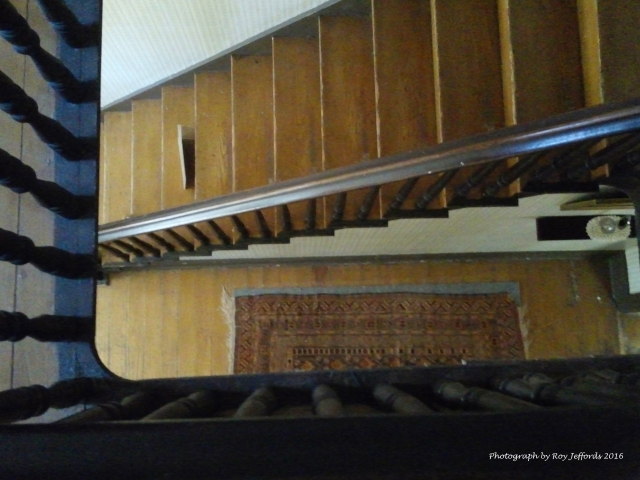
 Beautiful things can be created in an ugly building. Mr. Isaac Crouch, Sr. proved it in 1860 when he erected a rough, two-story, wooden structure at the northeast corner of Tennessee and Louisiana Streets on McKinney’s square. At the time, the Collin County courthouse was also a two-story wooden building. From its crude factory and woodshop, Crouch Furniture built a solid reputation for producing attractive, quality furniture. Over the next decade, even in an economy crippled by war, Mr. Crouch’s business continued to grow.
Beautiful things can be created in an ugly building. Mr. Isaac Crouch, Sr. proved it in 1860 when he erected a rough, two-story, wooden structure at the northeast corner of Tennessee and Louisiana Streets on McKinney’s square. At the time, the Collin County courthouse was also a two-story wooden building. From its crude factory and woodshop, Crouch Furniture built a solid reputation for producing attractive, quality furniture. Over the next decade, even in an economy crippled by war, Mr. Crouch’s business continued to grow.